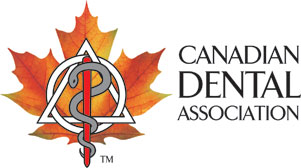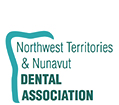Preamble
Since the Federal Government maintains jurisdiction over the standards of the construction and functioning of x-ray equipment, while its installation, registration and office design criteria for its use are promulgated by provincial legislatures, any guidelines developed by the Canadian Dental Association for the use of x-radiation in the dental office should not deal specifically with legislative areas, but rather set forth guidelines which reflect and demand professional competence and judgement.
Position
- All x-ray equipment, and its accessories, must conform to the Federal requirements of the Radiation Emitting Devices Act and the Food and Drugs Act.
- All equipment installation and room design criteria must conform to provincial regulations. In the absence of existing provincial regulations in any particular jurisdiction, the dentist should refer to Health Canada Safety Code 30.
- All operators should possess an adequate knowledge of the physics and potential hazards of x radiation, and be able to produce consistent radiographs of diagnostic quality, keeping the dose to the patient as low as reasonably achievable (ALARA). All operators should be licensed or certified according to the standard recognized by the provincial licensing body.
- A quality assurance program should be established in all aspects of radiological practice in the dental office on a regular basis in accordance with provincial regulations.
- It is highly desirable that the operator/owner request a radiology technologist, radiation physicist or similarly qualified person to perform a regular inspection of the x-ray equipment to assess radiation output and "normalize" the x-ray taking system. This is to ensure that existing exposure and processing conditions are producing clinically acceptable radiographs with an acceptable exposure range.
- An exposure guideline chart should be fixed near the control panel of the x-ray machine describing the exposure factors to be used on that machine for children, adults and edentulous patients.
- The dentist should view radiographs under optimal conditions. A magnifying glass with a variable intensity viewer is desirable. Extraneous light should be minimized.
- It is highly desirable that dentists enrol in continuing education in the many aspects of diagnostic radiology, physics of radiology and radiation biology.
Protection for Female Operators
Any female operator who suspects or knows she is pregnant must be assured that for the duration of her pregnancy her work duties are compatible with the recommended dose limits. In general, there is no reason to remove pregnant operators, or other pregnant staff members, from their duties of operating dental x-ray equipment.
Operators in Training and Students
- Students in radiography training programs must not expose a patient to x-rays except under supervision of a qualified operator, i.e. a licensed dentist or operator qualified through certified training, and licensed by the respective provincial authority.
- For operators-in-training and students, the recommended radiation dose limits for the public apply.
- Deliberate radiation exposure of an individual must not be performed solely for training purposes.
General Guidelines for Office Personnel
- A room must not be used for more than one x-ray procedure simultaneously, unless adequate shielding is provided between x-ray machines.
- Persons not essential to the radiologic procedure must not be in the room during patient exposure.
- Operators should not be in the room at the time of exposure. If an operator must be in the room with the patient during the exposure, appropriate shielding should preferably be used. If an operator must stay in the room and cannot otherwise use a shield, the operator should stand between 90° and 135° to the primary beam and at least 3 metres from the subject being radiographed. In a dental office, continual and routine use of a lead apron for an operator is not indicated.
- The dental film should be fixed in position by the patient or by use of a holding device. Operators should not hold the film in position or be in the room during exposure unless there is no other way to obtain the radiograph. If operators must hold the film in position, they should use appropriate shielding.
- If parents or escorts are called to assist, appropriate shielding should be worn by those persons.
- The x-ray housing should not be held by the operator during operation.
- All dental personnel involved in the taking and processing of radiographs should wear personal dosimeters to ensure that the current radiologic practice is not exposing them to radiation exceeding acceptable limits as defined in Safety Code 30. If continuous use is not felt to be necessary, periodic use is recommended.
- Under normal circumstances there should be no radiation recorded on the dosimeter badge. Where personnel are recording radiation levels on a regular basis, steps must be taken to investigate and correct the situation.
Guidelines to Protect the Patient
The exposure to the patient should be kept as low as reasonably achievable, but at the same time provide an adequate radiological examination capable of providing an accurate diagnosis.
- The prescription of a radiologic examination by a licensed dentist must be based on a clinical examination for the purpose of obtaining information not readily available from other sources.
- The justification for taking dental radiographs must be determined by a need to obtain specific information which could contribute to diagnosis or the formation of a treatment plan rather than utilizing the concept of the routine periodic examination with or without examining the patient. The taking of radiographs on request by third parties for administrative purposes only are not recommended.
- One should determine if any recent radiographs are available and see if those are adequate.
- When a patient changes dentists and diagnostic information is sought which might have been available on previous radiographs, then the new dentist should attempt to obtain such radiographs, rather than routinely issue a new prescription for radiographs.
- The number of radiographs required should be kept to the minimum, consistent with obtaining the required diagnostic information.
- Operators should select films of a speed and quality that will permit the production of radiographs of an acceptable diagnostic quality with minimum exposure of the patient to radiation.
- The quality of radiographs should be monitored routinely to ensure that diagnostic requirements are met.
- The decision to repeat radiographs should not be based on ideal technical requirements, but rather on a lack of required diagnostic information.
- Appropriate shielding should be used when exposing patients to radiation.
- The x-ray beam for radiographs should be collimated so that it irradiates only the minimum area necessary for the examination.
X-Rays and the Pregnant Patient
Elective procedures may be deferred until after the pregnancy .Pregnant patients requiring essential and/or emergency treatment should receive the minimum number of radiographs needed for diagnostic purposes.
X-Rays and Patients Who Have Received Radiation Therapy
There is no medical contraindication to taking dental radiographs on patients who are receiving or who have had radiation therapy.
Conclusion
The frequency of a radiological examination is a matter of clinical judgement. The selection of equipment and techniques used is the decision of a dentist. The aim of these guidelines is to ensure that dental offices comply with the ALARA principle and keep the amount of patient radiation exposure at as low a level as possible given current accepted radiological practice.
Approved
CDA Board of Directors
February 2005











